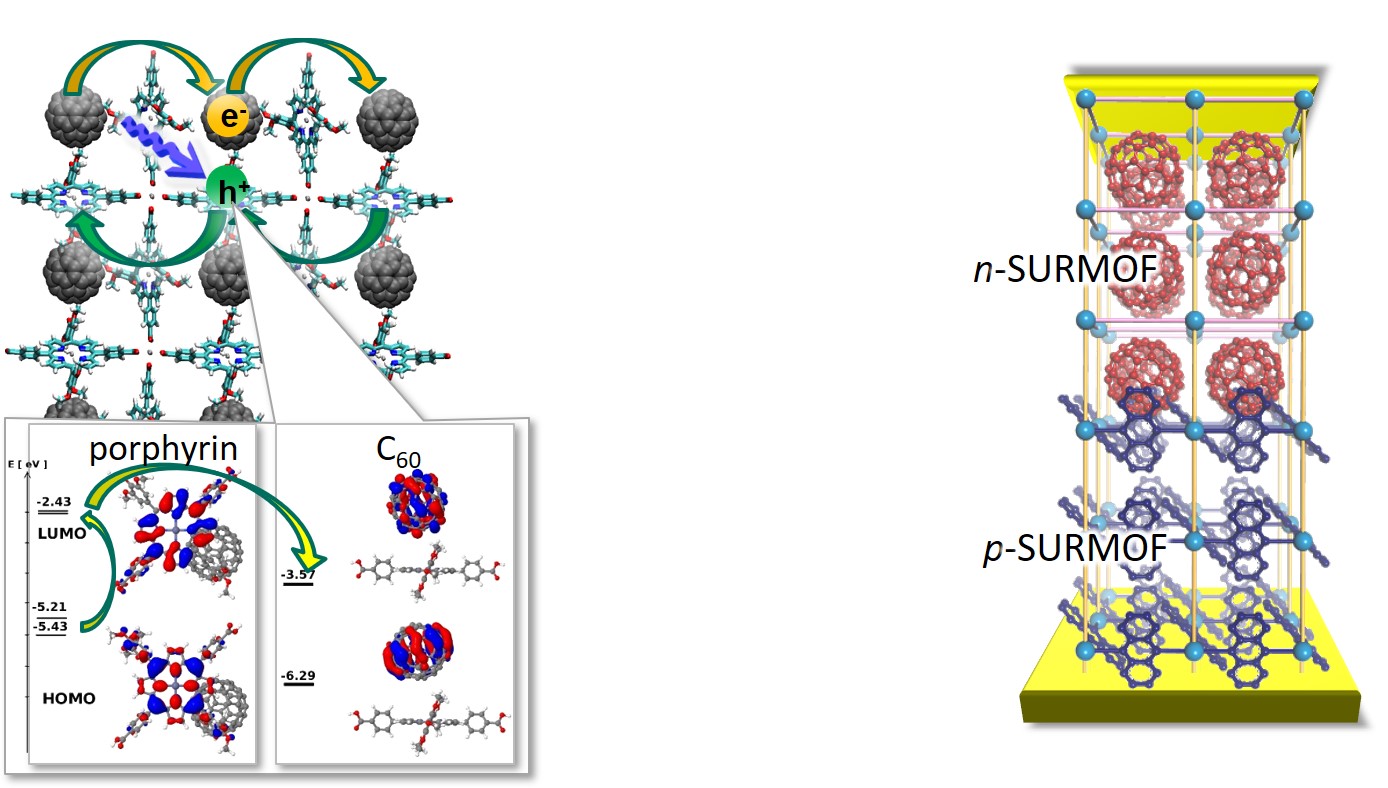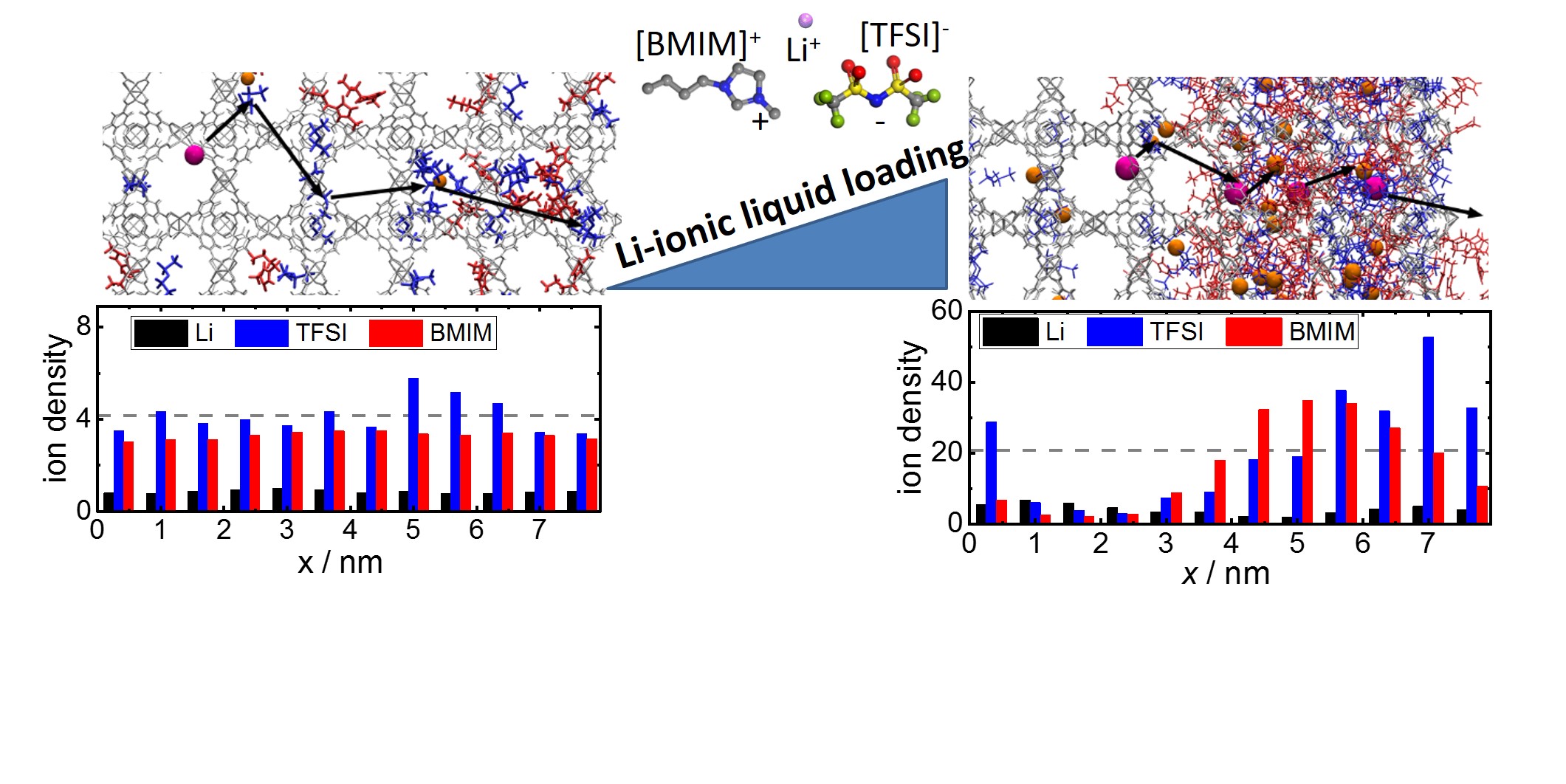Dynamic Processes in Porous Films
Dynamic processes in porous materials are crucial for their applications, ranging from sensor technology over molecular mixture separation to storage and conversion of energy. Furthermore, such processes are the key to the production of smart materials which dynamically respond to external stimuli.
Well-defined porous films of metal-organic frameworks, MOFs, are particularly fascinating. The interaction with the framework and the diffusion of the guest molecules in the pores as well as confinement effects are among the research interests of the work group.
Smart Nanoporous Coatings – Photoswitchable MOF films
The remote control of physical and chemical properties is one of the key challenges for intelligent, functional materials. The great potential of thin MOF films containing photoswitchable moieties is being explored. The photoswitchable moieties, such as azobenzene and spiropyran, can be reversibly switched by light of different wavelengths between different forms. This photoswitching influences the interaction between the host framework and the guest molecules, modifying the physicochemical properties.
- Closing and opening the pores and remote-controlled release from a nanoporous container. DOI: 10.1021/nn405469g
- Membranes with photoswitchable permeation and tunable molecular separation, DOI: 10.1038/ncomms13872, DOI: 10.1002/chem.201700989
- Remote-controllable proton conduction of the guest molecules, DOI: 10.1002/adma.201706551, DOI: 10.1039/c9sc04926f
- Inducing chirality by circularly polarized light, DOI: 10.1021/jacs.1c01693
Mass Transfer in Nanoporous Thin Films
Loading with guest molecules is the key for most applications of nanoporous materials, such as MOFs. Using a quartz crystal microbalance (QCM), time-resolved infrared (IR) or UV-vis spectroscopy, we investigate the mass transfer of various molecules in the nanoporous framework under different conditions:
- The uptake of vapor and the determination of adsorption enthalpies and activation energies, DOI: 10.1039/c3cp50578b.
- Comparison of liquid- and gas-phase diffusion in MOFs, DOI: 10.3390/ma8063767.
- Multi-component diffusion, DOI: 10.3390/ma8063767.
- Impact of surface defects on the mass transfer, DOI: 10.1038/ncomms5562, DOI: 10.1039/c8sc03735c.
- Adsorption and diffusion of chiral molecules in homochiral MOFs, DOI: 10.1039/c5cc02706c. DOI: 10.1039/c9cc02849h
Ionic Liquids in Confinement
Room temperature ionic liquids confined in porous materials find application in supercapacitors and batteries, as well as in ion-based signal processing. These materials show unique structural and dynamic properties, which we explore.
- Complex dynamics of ionic liquids in nanoporous confinement. DOI: 10.1021/acs.nanolett.8b04694.
- Exploring conduction mechanism of lithium-based ionic liquids under nano-confinement, DOI: 10.1021/acsami.1c00366.
Electric and Semiconductor Properties of MOF films
By incorporating functional organic semiconducting groups in the crystalline lattice,
MOFs may have highly interesting semi-conductor properties. Our research focus on:
- Photoconduction in MOF thin films for light-detectors, DOI: 10.1002/anie.201904475.
- pn-junction with crystalline interface and strong current rectification, DOI: 10.1002/advs.202001884.
Cover art gallery:

 and batteries, as well as in ion-based signal processing. These materials show unique structural and dynamic properties, which we explore.
and batteries, as well as in ion-based signal processing. These materials show unique structural and dynamic properties, which we explore.